This Product Guide is intended for administrators of InMotion’s OpenMetal Cloud product or any system administrator that is running their first OpenStack and Ceph private cloud. If you are not a current customer, you can signup and try on-demand private cloud for free.
These guides are also inside of OpenMetal Central. If you are current customer we recommend those guides as they may be more current than this set. Additionally, you can download the Cloud Operators guide as a PDF from inside Central. Login Here.
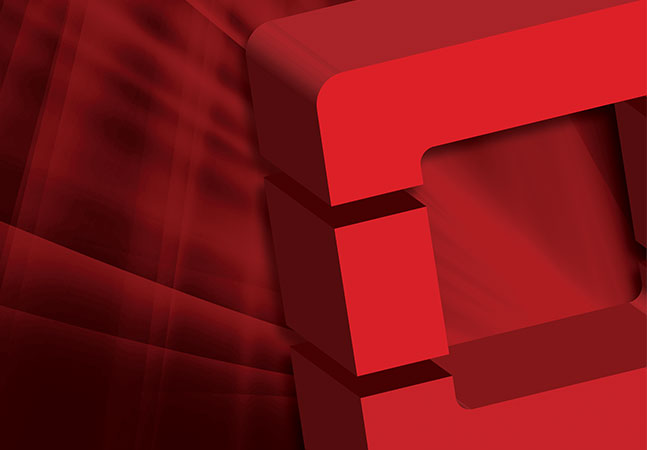
Of note, Flex Metal Clouds use two powerful Open Source softwares, OpenStack and Ceph. They form the core of our hyper-converged and converged clouds. They are extremely powerful and thus not all details can be covered here.
The first place to start is with our OpenStack Cloud Operator’s Manual. This manual was designed to allow a sophisticated system administrator to learn how to managed a cloud in roughly 40 hours of hands on training and experimenting.
In the case where you have purchased the Managed Private Cloud service level, we still recommend this manual, but it is not required as your Managed team will be administering your cloud for you.
Additional Private Cloud Documentation or Announcements
- On-Demand Resources in a Multi-Cloud Environment – CI/CD Solution for OpenStack’s Zuul Projectby Sash GhoshAbout Zuul Zuul is an open-source program that drives continuous integration, delivery, and deployment systems with a focus on project gating and interrelated projects. The OpenStack foundation recognized Zuul as an independent, openly governed project in early 2019. As opposed to previous generations of CI systems, Zuul does gating, which is that the patch is tested both Read More >
- Public Cloud vs Private Cloud – Cost Tipping Points
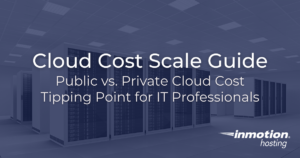 by Todd RobinsonA significant challenge for IT professionals is to determine the right placement of their dollars against Cloud Services provided by either Public Clouds or Private Clouds. To assist in understanding the the options and the driving forces for decisions, we have created a Key Services Map and this Cost and Scale Guide. As this analysis is quite Read More >
by Todd RobinsonA significant challenge for IT professionals is to determine the right placement of their dollars against Cloud Services provided by either Public Clouds or Private Clouds. To assist in understanding the the options and the driving forces for decisions, we have created a Key Services Map and this Cost and Scale Guide. As this analysis is quite Read More > - Machine Learning and Operating Systemsby Alyssa KordekAs the computing industry continues to innovate, the relationship between machine learning and operating systems has continued to mature. While there are a number of differences between Linux operating systems and Windows operating systems, both are used to some degree in modern machine learning applications. In this article we will discuss some of the computer operating systems Read More >
- Big Data and AIby Alyssa KordekOne of the emerging topics in the information technology industry is the relationship between Big Data and AI, or artificial intelligence. While AI can be used for a variety of purposes, it is extremely useful for sorting, organizing, and managing massive quantities of information and generating predictions based on that information. The study of this potential is Read More >
- Why Your Business Should Be Using a Private Cloud
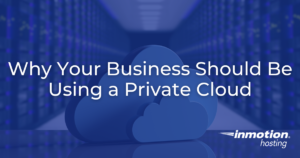 by Rebecca ShultzMoving to the Cloud can create a host of benefits for companies. A good cloud strategy can improve flexibility, increase efficiency, and boost performance. In addition, moving to the Cloud can allow an organization to grow its proficiencies in a way that can lead to growth and innovation. Not to mention the long-term reduction in IT costs. Read More >
by Rebecca ShultzMoving to the Cloud can create a host of benefits for companies. A good cloud strategy can improve flexibility, increase efficiency, and boost performance. In addition, moving to the Cloud can allow an organization to grow its proficiencies in a way that can lead to growth and innovation. Not to mention the long-term reduction in IT costs. Read More > - The Secret to Cloud Success — Own Your Own Infrastructureby RonnieWhat’s the secret to cloud success? If you’ve been paying attention to the world of business, you know that businesses large and small are moving from traditional servers to cloud based infrastructure. Keep reading to learn how the latest advances in server technology can ease your move to the cloud. Searching for Cloud Success Features of Cloud Read More >
- How Does Cognitive Computing Work?by Sam BrownCognitive computing (CC) refers to technology platforms that simulate human thinking in order to improve human decision-making. It is a combination of cognitive science and computer science. Cognitive computing platforms are self-learning systems that combine machine learning, reasoning, natural language processing, speech and vision recognition, human-computer interaction, dialog and narrative generation, as well other technologies. In this Read More >
- Nvidia Graphics Cardsby Alyssa KordekOne of the current leaders in GPU (Graphics Processing Unit) technologies are Nvidia graphics cards. The Nvidia corporation specializes in high-performance graphics processing hardware and software ranging from graphics cards to graphics drivers and graphics optimization utilities. Alongside AMD, Nvidia is one of the main providers of GPU hardware for both individual computer hobbyists as well as Read More >
- GPUs and Deep Learningby Alyssa KordekCompanies are becoming more reliant on Artificial Intelligence. AI has become a common factor in everything from predictive text to customer contact. When it comes to understanding machine learning and artificial intelligence, it can be helpful to familiarize yourself with the concept of deep learning and how it relates to Graphics Processing Units (GPUs). While the concept of Read More >
- What is Cloud Repatriation?by Todd Robinson“Cloud Repatriation” has recently become a buzzword – and one that builds on the confusion of “cloud”. This term is typically used when talking about companies that are significantly overpaying for infrastructure from their Public Cloud of choice. So what is “Cloud Repatriation”? Cloud Repatriation is when a company is moving workloads out of the Public Clouds Read More >
- InMotion Hosting and Supermicro Success Story. A small footprint, cost-efficient on-demand OpenStack Private Cloud.
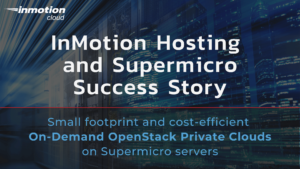 by Sash GhoshSupermicro recently published a success story describing how InMotion Hosting built an on-demand private cloud solution on Supermicro hardware. The high density and resulting cost efficiencies offered by Supermicro MicroBlade servers enabled the successful implementation of OpenStack as a Service concept for InMotion Hosting’s Flex Metal Cloud product. Traditionally OpenStack has been used to power enterprise infrastructure Read More >
by Sash GhoshSupermicro recently published a success story describing how InMotion Hosting built an on-demand private cloud solution on Supermicro hardware. The high density and resulting cost efficiencies offered by Supermicro MicroBlade servers enabled the successful implementation of OpenStack as a Service concept for InMotion Hosting’s Flex Metal Cloud product. Traditionally OpenStack has been used to power enterprise infrastructure Read More > - TPU vs GPU: Pros and Cons
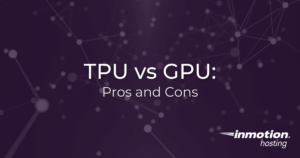 by Sam BrownTPU vs GPU, which is better for you? As artificial intelligence (AI) continues to increase in popularity, there is a lot of buzz around TPUs and GPUs. A lot of people compare TPU vs GPU, but the two are very different components. In this article, we’ll tackle TPU vs GPU by covering what exactly TPUs and GPUs Read More >
by Sam BrownTPU vs GPU, which is better for you? As artificial intelligence (AI) continues to increase in popularity, there is a lot of buzz around TPUs and GPUs. A lot of people compare TPU vs GPU, but the two are very different components. In this article, we’ll tackle TPU vs GPU by covering what exactly TPUs and GPUs Read More > - Uses for GPUs: 4 Reasons Other Than Gaming
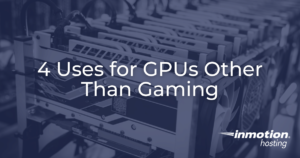 by Alyssa KordekWhile Graphics Processing Units (GPUs) are commonly used to render computer graphics for video games, there are a number of uses for GPUs other than gaming. GPUs can be used for video editing, 3D graphics rendering, and much more. With a high processing throughput, GPUs can process more data than their Central Processing Unit (CPU) counterparts, making Read More >
by Alyssa KordekWhile Graphics Processing Units (GPUs) are commonly used to render computer graphics for video games, there are a number of uses for GPUs other than gaming. GPUs can be used for video editing, 3D graphics rendering, and much more. With a high processing throughput, GPUs can process more data than their Central Processing Unit (CPU) counterparts, making Read More > - What is GPU Parallel Computing?
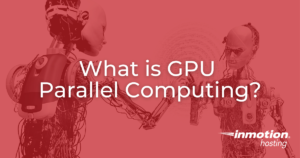 by Sam BrownGPU parallel computing refers to a device’s ability to run several calculations or processes simultaneously. In this article, we will cover what a GPU is, break down GPU parallel computing, and take a look at the wide range of different ways GPUs are utilized. What is a GPU? GPU vs. CPU GPU Parallel Computing What are GPUs Read More >
by Sam BrownGPU parallel computing refers to a device’s ability to run several calculations or processes simultaneously. In this article, we will cover what a GPU is, break down GPU parallel computing, and take a look at the wide range of different ways GPUs are utilized. What is a GPU? GPU vs. CPU GPU Parallel Computing What are GPUs Read More > - GPUs and CPUs
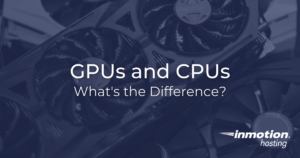 by Alyssa KordekWhile the differences between graphics processing units (GPUs) and central processing units (CPUs) may seem self-explanatory, there are a number of key differences that are not immediately apparent. Even though both GPUs and CPUs handle complex computational tasks, they differ in their processing power, number of processor cores, and ability to handle concurrent processing tasks. In this article Read More >
by Alyssa KordekWhile the differences between graphics processing units (GPUs) and central processing units (CPUs) may seem self-explanatory, there are a number of key differences that are not immediately apparent. Even though both GPUs and CPUs handle complex computational tasks, they differ in their processing power, number of processor cores, and ability to handle concurrent processing tasks. In this article Read More > - How Can We Remove Barriers to Widespread Adoption of Open Source Infrastructure for Private Clouds?
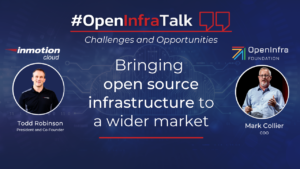 by Sash GhoshThis article uses current cloud adoption and usage statistics to build on the discussion (in the video) between Todd Robinson, President of InMotion Hosting and Marc Collier, COO of OpenInfra Foundation about the current challenges around widespread adoption of OpenStack powered infrastructure, especially in the context of private clouds for SMBs. Todd Robinson is the President and Read More >
by Sash GhoshThis article uses current cloud adoption and usage statistics to build on the discussion (in the video) between Todd Robinson, President of InMotion Hosting and Marc Collier, COO of OpenInfra Foundation about the current challenges around widespread adoption of OpenStack powered infrastructure, especially in the context of private clouds for SMBs. Todd Robinson is the President and Read More > - On-Demand Private Cloud Powered by OpenStack General Availability
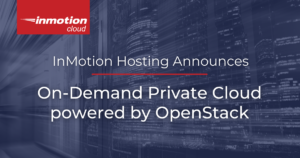 by Ashley HoodInMotion Hosting Establishes a New Foothold InMotion Hosting establishes a foothold in the IaaS and Private Cloud markets by announcing the general availability of Flex Metal Cloud IaaS. Flex Metal Cloud offers an On-Demand Private Cloud powered by OpenStack, an open-source infrastructure platform. In this article: On-Demand Private Clouds Made Easily Accessible for Smaller IT Teams The Read More >
by Ashley HoodInMotion Hosting Establishes a New Foothold InMotion Hosting establishes a foothold in the IaaS and Private Cloud markets by announcing the general availability of Flex Metal Cloud IaaS. Flex Metal Cloud offers an On-Demand Private Cloud powered by OpenStack, an open-source infrastructure platform. In this article: On-Demand Private Clouds Made Easily Accessible for Smaller IT Teams The Read More > - Scaling VM Workloads on Private Clouds
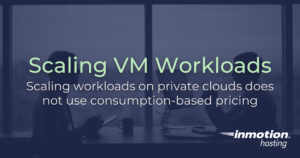 by Jadon NaasIntroduction Properly scaling workloads is one of the biggest concerns for experienced cloud professionals. This is due to improperly scaled workloads on public clouds that result in high costs. A workload that is not scaled big enough will have poor performance, but a workload that is scaled too big will waste money. This is a waste of Read More >
by Jadon NaasIntroduction Properly scaling workloads is one of the biggest concerns for experienced cloud professionals. This is due to improperly scaled workloads on public clouds that result in high costs. A workload that is not scaled big enough will have poor performance, but a workload that is scaled too big will waste money. This is a waste of Read More > - Matching Public Cloud Offerings on an OpenStack Private Cloud
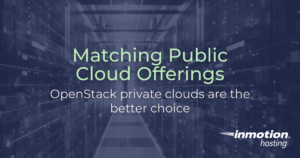 by YuriyPublic Cloud now offering the Abracadabra Package! Seems like every other week we hear about a new service coming out of the public cloud: Lambda! Compute Engine! BigQuery! Glue! Athena! Fargate! Purview! Each of these new services comes with a new innovative marketing campaign, unique name, and the feeling that this is going to be better than Read More >
by YuriyPublic Cloud now offering the Abracadabra Package! Seems like every other week we hear about a new service coming out of the public cloud: Lambda! Compute Engine! BigQuery! Glue! Athena! Fargate! Purview! Each of these new services comes with a new innovative marketing campaign, unique name, and the feeling that this is going to be better than Read More > - On-Demand OpenStack – FMC Release V1.1
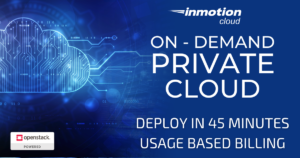 by Todd RobinsonFlex Metal Cloud Release V1.1 – Feb 15th, 2021 Our goal is to enable smaller teams to easily learn, run, and grow private cloud infrastructure. We are also big Open Source fans so we are focused on improving OpenStack for use by smaller teams. This can mean teams of 1 to teams of 100s. OpenStack, to architect, Read More >
by Todd RobinsonFlex Metal Cloud Release V1.1 – Feb 15th, 2021 Our goal is to enable smaller teams to easily learn, run, and grow private cloud infrastructure. We are also big Open Source fans so we are focused on improving OpenStack for use by smaller teams. This can mean teams of 1 to teams of 100s. OpenStack, to architect, Read More >